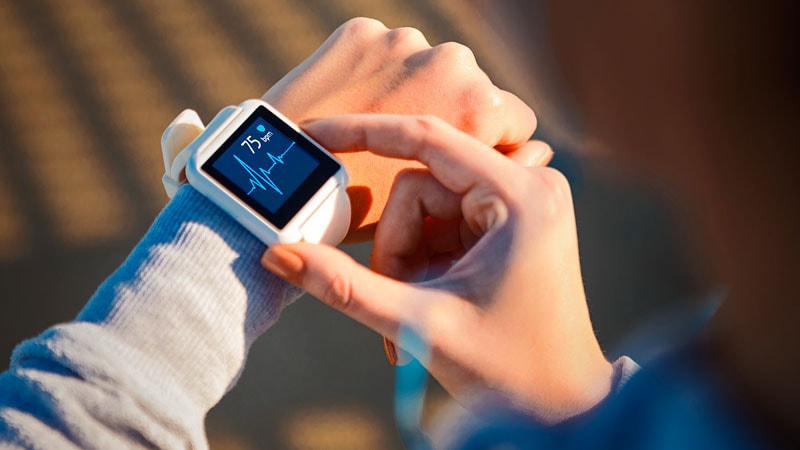Over roughly the past decade, there has been rapid development and swift uptake of consumer technology capable of recording physiologic data relevant to cardiac health, including physical activity, heart rate, electrocardiograms, and episodes of atrial fibrillation (AF).
And healthcare providers are taking notice, according to a new analysis of 21,013,729 provider notes from 492,192 adult primary care patients (60.7% female; mean age, 48 years).
The analysis showed that annual mention of wearable devices with cardiac sensors increased from 0.0002% of provider notes in 0.0006% of patients in 2005 to 0.14% of notes in 0.89% of patients in 2019.
“By 2019, consumer wearable devices were mentioned in medical notes for nearly 1% of adult primary care patients. This represents a dramatic increase from just a few years prior,” Steven Lubitz, MD, MPH, Massachusetts General Hospital, Boston, told theheart.org | Medscape Cardiology.
Among wearables, Fitbit was the most commonly referenced device, which made up 74% of patients with devices and accounted for the rapid rise in device mentions between 2012 and 2016, before declining in 2017. Starting in 2015, Apple Watch drove growth in device mentions.
Patient-level factors associated with talk of wearable devices in clinical encounters included younger age, female sex, higher income, obesity, hyperlipidemia, hypertension, AF/atrial flutter, other arrhythmias, and White race.
Device mentions were most likely in cardiology encounters (odds ratio, 4.74). Other note-level factors associated with device mention included calendar year, obesity, AF/flutter, other arrhythmias, hypertension, and hyperlipidemia.
“We anticipate consumer-device mention during patient–provider encounters will continue to rise substantially in the coming years as manufacturers increasingly incorporate validated technology and algorithms capable of measuring signals of clinical relevance,” Lubitz said.
“We anticipate that the increase in consumer-device mention during patient–provider outcomes will be driven both by patients seeking counsel regarding measurements and notifications from devices, as well as by clinicians seeking to leverage consumer device capabilities for clinical management,” he added.
The study was published online June 27 in Circulation: Cardiovascular Quality and Outcomes.
Major Challenges Ahead
Lubitz said “major” challenges and unanswered questions for the field include how consumer wearable devices relate to clinical outcomes and how clinicians can optimally integrate data from consumer devices into practice.
Other questions include how clinicians should discuss, counsel, and perhaps recommend consumer devices to patients; whether wearable devices drive appropriate or inappropriate healthcare use; and whether consumer health technology contributes to disparities in care or could be used to mitigate existing disparities.
Reached for comment, Gregory M. Marcus, MD, University of California, San Francisco, noted that although 1% of visits included mention of a wearable device, it’s important to keep this “ostensibly small number” with several contexts in mind.
“First, the trajectory of the rise in frequency of wearable-device mentions was quite staggering, including more than a 100-fold change over the study period,” Marcus told theheart.org | Medscape Cardiology.
He also noted that this analysis was limited to only healthcare documentation of a discussion about a wearable, “which is certainly a substantial underestimate of the actual frequency of conversations about wearables between healthcare professionals and their patients.”
Marcus said it’s also important to note that the study wasn’t designed to determine whether mention of a wearable device was related to overall increased or decreased healthcare utilization.
The study provides “an interesting window into how use of these devices is percolating into clinical practice, but original research will be required to determine optimal workflows that best support rather than hinder healthcare professional’s efforts and the well-being of our patients,” he said.
Funding for the study was provided in part by the National Institutes of Health and the American Heart Asso ciatio n. Lubitz receives sponsored research support from Bristol Myers Squibb/Pfizer, Bayer AG, Boehringer Ingelheim, Fitbit, IBM Health, Medtronic, and Premier, Inc, and has consulted for Bristol Myers Squibb/Pfizer, Bayer AG, Blackstone Life Sciences, and Invitae. Marcus has no relevant disclosures.
Circ Cardiovasc Qual Outcomes. Published online June 27, 2022. Abstract
For more from theheart.org | Medscape Cardiology, follow us on Twitter and Facebook.
Source: Read Full Article
